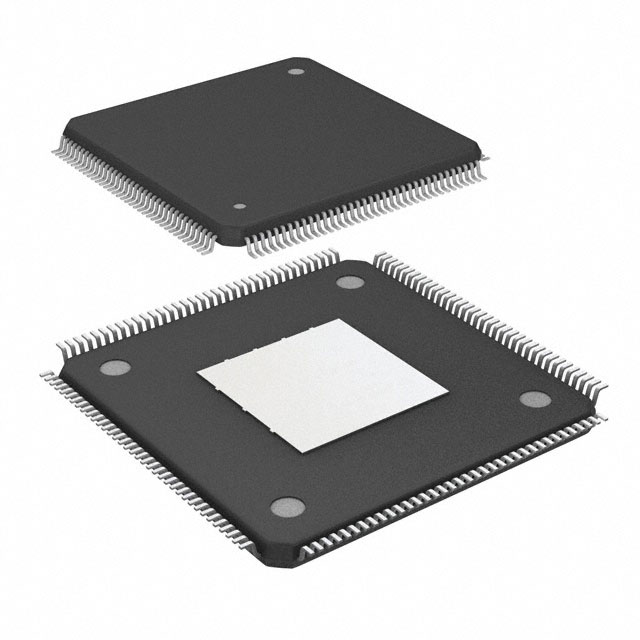Viz Specifikace pro podrobnosti o produktu.

EP4CE10E22C7N
Product Overview
- Category: Programmable Logic Device (PLD)
- Use: EP4CE10E22C7N is a PLD used for digital logic applications.
- Characteristics: It offers high performance, low power consumption, and flexibility in design.
- Package: The EP4CE10E22C7N comes in a compact package suitable for integration into various electronic systems.
- Essence: It serves as a versatile solution for implementing complex digital circuits.
- Packaging/Quantity: The EP4CE10E22C7N is typically packaged individually and is available in various quantities.
Specifications
- Logic Elements: The EP4CE10E22C7N contains 10,320 logic elements.
- Memory: It provides 414 kilobits of embedded memory.
- Clock Networks: The device includes 288 global clock networks.
- I/O Pins: It features 179 input/output pins for interfacing with external devices.
- Power Supply: The EP4CE10E22C7N operates on a voltage range of 1.15V to 1.25V.
Detailed Pin Configuration
The EP4CE10E22C7N has a specific pin configuration that enables connectivity with other components. Please refer to the manufacturer's datasheet for the detailed pinout diagram.
Functional Features
- High Performance: The EP4CE10E22C7N offers fast processing speeds, making it suitable for demanding applications.
- Low Power Consumption: It is designed to minimize power consumption, ensuring energy efficiency.
- Flexibility: The device allows for reprogramming, enabling designers to modify the functionality as needed.
- Integration: With its embedded memory and I/O capabilities, the EP4CE10E22C7N can be easily integrated into various systems.
Advantages and Disadvantages
Advantages: - High performance and flexibility - Low power consumption - Compact package for easy integration
Disadvantages: - Limited logic elements compared to higher-end PLDs - May require additional components for certain applications
Working Principles
The EP4CE10E22C7N operates based on the principles of programmable logic. It consists of configurable logic blocks, interconnects, memory elements, and I/O pins. The device can be programmed using hardware description languages or design software, allowing designers to define the desired functionality.
Detailed Application Field Plans
The EP4CE10E22C7N finds applications in various fields, including: 1. Industrial Automation: It can be used for controlling and monitoring processes in manufacturing plants. 2. Communications: The device enables the implementation of communication protocols and data processing in networking equipment. 3. Consumer Electronics: It is suitable for designing digital audio/video systems, gaming consoles, and home automation devices. 4. Automotive: The EP4CE10E22C7N can be utilized in automotive electronics for functions like engine control, driver assistance systems, and infotainment.
Detailed and Complete Alternative Models
- EP4CE6E22C8N: A lower-capacity version with 6,272 logic elements.
- EP4CE15E22C8N: A higher-capacity version with 14,928 logic elements.
- EP4CE30E22C8N: A higher-capacity version with 29,440 logic elements.
These alternative models offer different logic element capacities to cater to varying design requirements.
Note: The content provided above is a sample structure for an encyclopedia entry and may not reflect actual specifications or details of the EP4CE10E22C7N product.
Seznam 10 běžných otázek a odpovědí souvisejících s aplikací EP4CE10E22C7N v technických řešeních
Sure! Here are 10 common questions and answers related to the application of EP4CE10E22C7N in technical solutions:
Q: What is EP4CE10E22C7N? A: EP4CE10E22C7N is a field-programmable gate array (FPGA) chip manufactured by Intel (formerly Altera). It offers programmable logic, memory, and digital signal processing capabilities.
Q: What are the key features of EP4CE10E22C7N? A: Some key features include 10,080 logic elements, 414 kilobits of embedded memory, 56 embedded multipliers, and support for various I/O standards.
Q: How can EP4CE10E22C7N be used in technical solutions? A: EP4CE10E22C7N can be used in a wide range of applications such as industrial automation, telecommunications, automotive systems, medical devices, and more.
Q: Can EP4CE10E22C7N be programmed using a hardware description language (HDL)? A: Yes, EP4CE10E22C7N can be programmed using popular HDLs like VHDL or Verilog.
Q: What development tools are available for programming EP4CE10E22C7N? A: Intel Quartus Prime is the primary development tool for programming and configuring EP4CE10E22C7N. It provides a complete design environment with synthesis, simulation, and debugging capabilities.
Q: Can EP4CE10E22C7N interface with other components or devices? A: Yes, EP4CE10E22C7N supports various communication protocols such as SPI, I2C, UART, and Ethernet, allowing it to interface with other components or devices.
Q: What are the power requirements for EP4CE10E22C7N? A: EP4CE10E22C7N typically operates at a voltage of 1.2V and requires additional voltages for I/O banks and configuration.
Q: Can EP4CE10E22C7N be reprogrammed after deployment? A: Yes, EP4CE10E22C7N is a reprogrammable FPGA, which means its functionality can be modified even after it has been deployed in a system.
Q: Are there any limitations to consider when using EP4CE10E22C7N? A: Some limitations include limited resources compared to larger FPGAs, potential power consumption concerns, and the need for expertise in FPGA design.
Q: Where can I find additional resources and support for EP4CE10E22C7N? A: Intel provides comprehensive documentation, application notes, reference designs, and an online community forum to assist users in designing with EP4CE10E22C7N.
Please note that the answers provided here are general and may vary depending on specific use cases and requirements.

